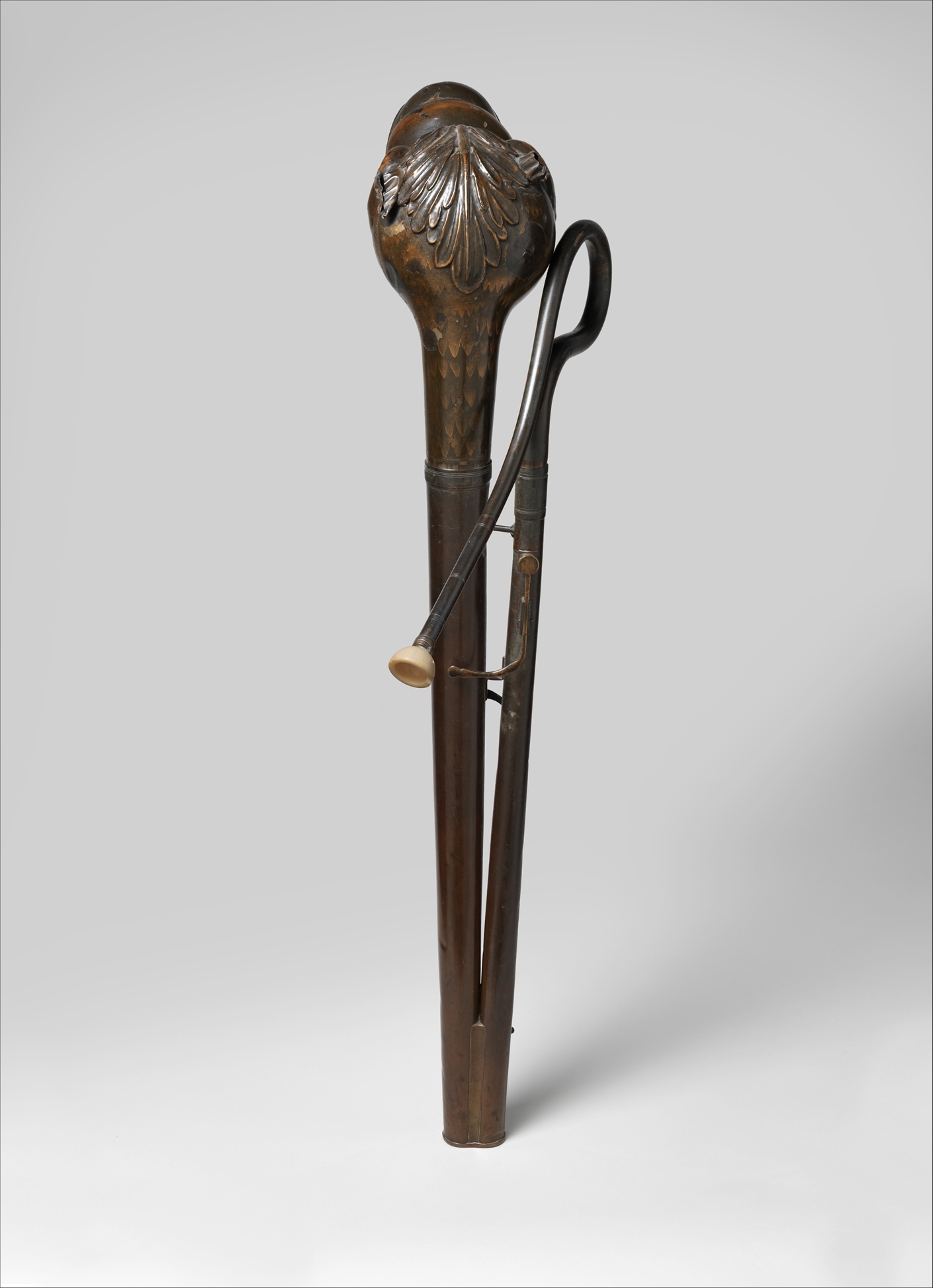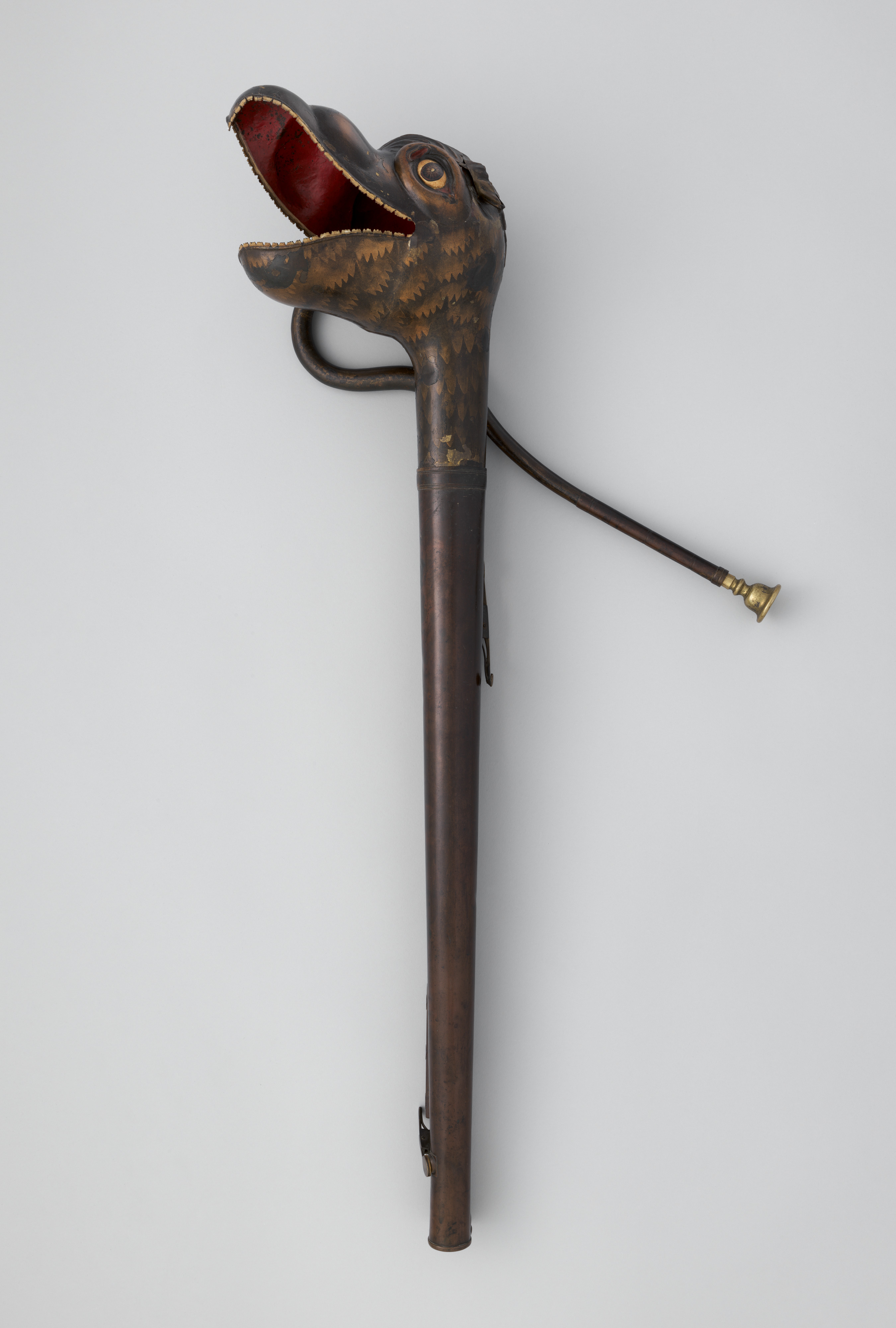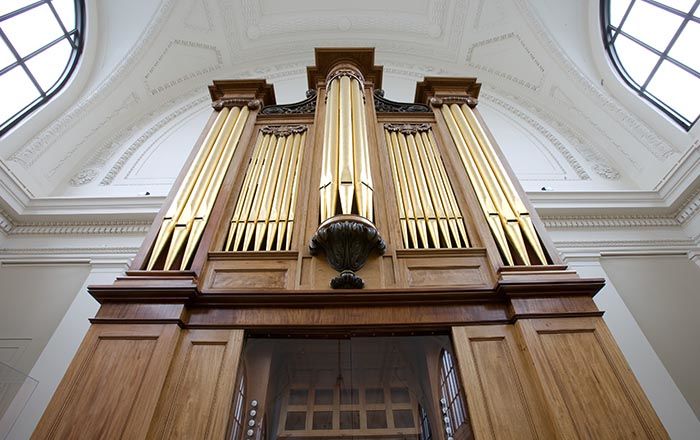Upright Serpent in D
Not on view
Upright serpents and trombones with dragon heads enjoyed some popularity in Italy, France, and Spain between about 1790 and 1840. The fashion for the motif was triggered by excavations of ancient Celtic horns with dragon heads. This example had three keys, six finger holes. The serpent, a wide bass with finger holes that evolved at the end of the sixteenth century, gained importance in band music during the second half of the eighteenth century. Thenceforth, the serpent's unwieldy shape was either modified or converted to upright forms. When in 1829 valve basses began to be developed, they absorbed the characteristics of the serpent, which gradually became extinct. The most important types of early valve basses were the bombardon, the tuba (1835), and the valved ophicleide (1835).
This image cannot be enlarged, viewed at full screen, or downloaded.
This artwork is meant to be viewed from right to left. Scroll left to view more.







